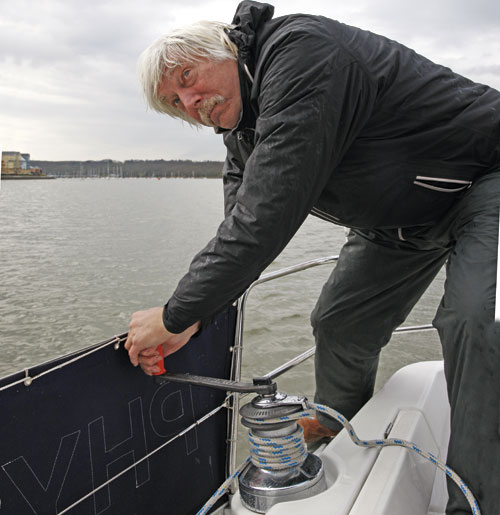Tom Cunliffe shares his expertise on the topic of rope problems and solutions
Our expert Tom Cunliffe shares the most common rope problems and solutions
Chafe
Chafe occurs at pinch points in blocks and at mast sheaves. It can also take place where a rope passes inevitably over a guardrail or rubs on a shroud. There’s much that can be done to reduce chafe, but some degree is inevitable. The way a rope copes with it can be important to a quiet life.
Stretch
Stretch is unimportant in some applications. In others, it is a real killer. Take, for example, a rope with a 4% stretch potential. This makes little difference on a sheet because there’s a relatively short run between the clew and winch. Also, its precise setting is generally less important than for, say, a halyard. An outhaul for a mainsail on a 12ft boom will only crawl back half an inch or so.
Halyards are a different story. On a 40ft mast, the main halyard will be around 80ft long – more if it is led back to the cockpit. It all stretches, so an apparently low factor of 3-4% can add up to four inches of sag, with an insidious effect on sail performance. The canvas is baggier without enough luff tension, making the boat heel more and generating extra weatherhelm. What’s more, the luff can end up looking like a crinkle-cut chip. And there’s more. To compensate for stretch, a skipper will grind his halyards until the sail looks right. But if the halyard is stretching more and more, the tension on the rope is far greater than if it just sits there doing the job. More tension brings more compression on the spar, more load on the winch and on everything else, which does none of it any favours.
Slippage
Although FGR stretches no more than wire (and in some cases less), it does suffer from the problems of ‘slip’ and ‘creep’. With a halyard locked in its jammer, for example, the Dyneema core can slip a little under the cover, although this is happening less with the latest incarnations.
Creep
Creep is a different matter. Even without a coat, a length of raw Dyneema will, if suitably loaded up, creep a small amount. It’s not slipping in the jammer and it isn’t stretching. The actual material is adjusting to the loaded state. On a highly-tuned race-boat this very small increment is something that must be addressed. For a cruiser, the net effect is far less than the stretch we would expect with a standard braid-on-braid halyard, so it may not be an issue at all, but it’s important to understand what’s happening.
What ropes to use in running rigging
On most cruisers, sheets and other ropes that are constantly adjusted and not under tremendous load can sensibly be braid-on-braid for economy, ease of splicing and soft feel. Lines that are set up tightly then left are a different story. On a boat with pretensions to performance, high-modulus can make a dramatic difference.
Reef pennants are a case in point. A Dyneema pennant can be a size or two smaller than the standard braidline item, yet will be just as strong and will stay tight once set up. If it’s hove down manually, this may be bad advice because you need something with abitofmeatonittograbholdof. But put a winch into the equation and it’s FGR every time.
On boats with single-line reefing, I’m at a loss to know why anyone would specify anything other than FGR. I’ve seen stretch kill these systems stone dead, with the sail crawling out of shape continually when the wind really gets up. There’s lots of rope running round in those special booms and it all stretches if we give it the chance. To my mind, spending all that money, then spoiling the result to save a few quid on rope misses the point.
Main halyards should definitely be some sort of Dyneema, ideally with a Technora coat or its equivalent. Wire halyards are a thing of the past now. High-modulus ropes have replaced them. If your boat never had them and is 32ft or over, she probably should have done.
I recall sending a 32ft Westerly Fulmar back to the manufacturers when I worked at the old National Sailing Centre in Cowes. Shaula was the first training Fulmar to be commissioned and when I tried sailing her with the braid-on-braid halyard supplied, the mainsail luff ended up looking like the edge of my Granny’s old washboard. Wire it had to be.
Today, the issue would be solved by simply swapping the rope for a Dyneema equivalent; it would be smaller gauge than polyester, and stronger and lighter but also about three times more expensive.
FGR can usefully be specified for running backstays. Get rid of the horrible wire hanging around and have light, safe Dyneema instead. What a difference!
Headsail halyards should also ideally be FGR, but on roller forestays I have found fewer problems maintaining luff tension than on a mainsail. So, if funds are tight, my advice would be to upgrade the main halyard first and see how you get on.
This feature appears in the March 2014 issue of Yachting Monthly.




